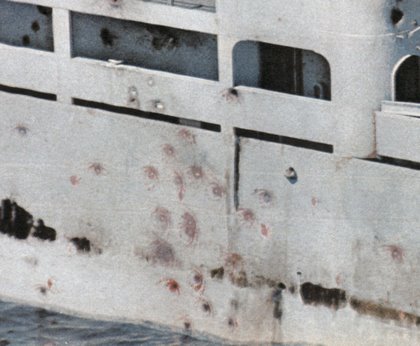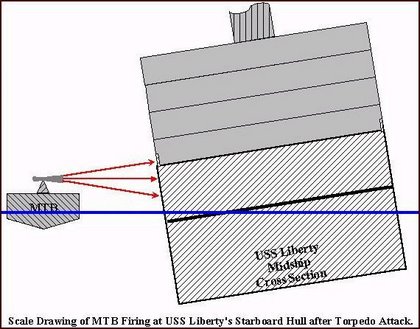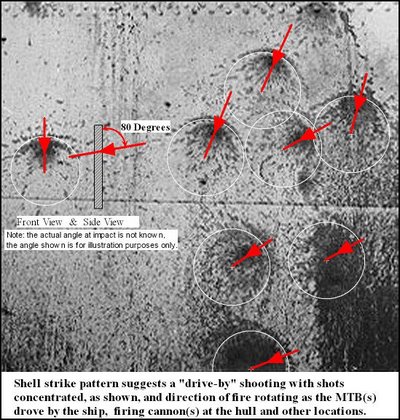Cannon Shell Strike Pattern Supports Close-in MTB Attack
K. J. Halliwell (March 17, 2005 -- Revised August 24, 2007)

The cluster of cannon shell and bullet strikes in the mid-ship hull area (between frames 80 to 95), on USS Liberty's starboard side, range from about 2 to 18 feet above the Plimsoll line and appear as angular shots fired from positions higher than the strike points, as shown in post attack photographs like the one above. Thus, it appears that these shots could not have originated from a close-by motor torpedo boat (MTB), firing directly at the hull, as attack survivors claim. But recall that the survivors' claim involves the MTB's attacking the ship with cannon and machine gun fire about 15 to 20 minutes after the torpedo hit -- when the ship was listing to starboard about 10 degrees, as depicted in the drawing below.

Shots directed at the inclined hull would appear to come from above and not below; and, indeed, an analysis (see below) shows that the highly concentrated shell impacts, and their tell-tail shrapnel arc showing orientation of trajectory, fits the pattern of at least one close-by MTB moving past the ship and concentrating its cannon fire on the the ship's hull, at a location directly outside the engine room.

Being close to the ship means the MTB crew would have been able to see clearly the ship's name "LIBERTY" on the stern, the large "GTR5" letters on both her stern and bow, and the American flag flying on her large central mast. They would have been close enough to see the sailors on USS Liberty's deck while continuing their deadly attack, after the torpedo hit, as several witnesses testified during the Naval Court of Inquiry.
USS Liberty Engineering Log: "1453 [about 20 minutes after the torpedo hit] ... 20mms and ... smaller caliber bullets coming through the bulkhead ... [on] ... starboard side ... [between] frames 80 to 95."